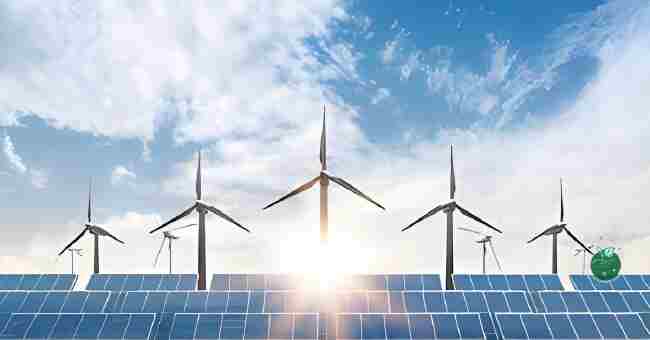Table of Contents
Is the “rise of green infrastructure investment” merely a passing trend, or an unfolding transformation reshaping our cities? The answer is a resounding yes – this is a paradigm shift we can no longer ignore.
I vividly recall my childhood walks through the vibrant parks and tree-lined streets of my hometown. Those green spaces weren’t just aesthetic pleasures; they were sanctuaries of tranquility that shaped my connection with nature.
Sadly, as urbanization accelerated, many cities traded their green lungs for concrete jungles, compromising public health, exacerbating flooding risks, and degrading quality of life.
The good news is that we’re witnessing a renaissance, with cities worldwide embracing green infrastructure as a cost-effective, sustainable solution to modern urban challenges.
I promise to explain better how this nature-based approach delivers compounding economic, environmental, and social benefits while future-proofing our communities.
What is Green Infrastructure?
Green infrastructure refers to the network of natural and semi-natural areas that provide ecosystem services and support biodiversity. Examples include parks, gardens, green roofs, wetlands, and urban forests.
Unlike traditional grey infrastructure like roads and sewers, green infrastructure works with nature to manage stormwater, improve air quality, reduce urban heat islands, and enhance overall community well-being.
As cities across the globe face mounting challenges from climate change, population growth, and aging infrastructure, investing in green solutions has become paramount. Green infrastructure offers a cost-effective, sustainable approach to building resilient communities while delivering numerous co-benefits.
The Multiple Benefits of Green Infrastructure
Investing in green infrastructure isn’t just about environmental protection – it’s a wise economic decision that yields compounding returns. Here are some key advantages:
- Stormwater Management: Green infrastructure like bioswales, rain gardens, and permeable pavements absorb and filter stormwater, reducing the burden on aging sewer systems and preventing overflows.
- Improved Air Quality: Urban forests and green spaces help remove air pollutants, providing respiratory benefits for city dwellers.
- Energy Savings: Green roofs and trees provide insulation and shade, lowering energy demands for heating and cooling buildings.
- Enhanced Property Values: Numerous studies show that proximity to green spaces correlates with higher property values and faster sales.
- Recreation and Well-being: Parks, trails, and community gardens promote physical activity, mental health, and social cohesion.
Green Infrastructure in Action: Philadelphia’s Green City, Clean Waters Plan
Philadelphia’s Green City, Clean Waters Plan is a shining example of how cities can leverage green infrastructure to tackle aging water infrastructure challenges. Faced with a multi-billion dollar price tag for traditional grey infrastructure upgrades, the city opted for a hybrid approach incorporating green solutions.
The plan includes an extensive network of green stormwater infrastructure like porous pavements, rain gardens, and green roofs to capture runoff and reduce combined sewer overflows.
Not only is this approach more cost-effective, but it also provides valuable community amenities like improved air quality, recreational spaces, and enhanced property values.
Green Infrastructure and Job Creation
Investing in green infrastructure isn’t just good for the environment – it’s also a powerful economic engine that creates jobs in construction, landscaping, engineering, and more. According to a report by Green For All, every $1 million invested in green infrastructure supports 18-24 jobs.
Moreover, many green infrastructure projects prioritize local hiring and workforce development, providing pathways to well-paying careers for underserved communities.
This aligns with the goals of the Bipartisan Infrastructure Law, which allocates billions for green infrastructure projects across the nation.
Cost Savings and Return on Investment
While the upfront costs of green infrastructure may seem daunting, the long-term savings and economic returns are substantial. A study by The Nature Conservancy found that every $1 invested in green infrastructure for stormwater management saves $3 in upfront costs compared to traditional grey infrastructure.
Furthermore, green infrastructure provides compounding returns through decreased energy costs, improved property values, and enhanced community well-being. According to a study in Philadelphia, every $1 invested in green infrastructure returns $4 in environmental and social benefits.
Innovative Green Infrastructure Solutions
As interest in green infrastructure grows, so too does the innovation in sustainable design and technology. Here are a few cutting-edge solutions making waves:
Sponge Cities: Pioneered in China, the Sponge City concept aims to make urban areas absorb and capture 70% of rainwater through an interconnected network of green spaces, permeable pavements, and underground storage facilities.
Green Roofs and Walls: Beyond their stormwater management capabilities, green roofs and walls provide insulation, habitat for pollinators, and striking visual appeal. The Semper Greenwall uses modular panels to create lush living walls.
Smart Green Infrastructure: The integration of sensors, data analytics, and automation is optimizing green infrastructure performance. For instance, Smart Green Infrastructure Monitoring uses real-time data to manage stormwater flows and irrigation schedules dynamically.
Key Takeaways
- Green infrastructure provides cost-effective solutions to urban challenges like stormwater management, air pollution, and heat islands.
- Investing in green infrastructure creates jobs, saves money, and delivers compounding environmental, social, and economic benefits.
- Cities worldwide are adopting innovative green infrastructure approaches from sponge cities to smart monitoring systems.
- The rise of green infrastructure aligns with national priorities like the Bipartisan Infrastructure Law and workforce development.
Overcoming Barriers to Green Infrastructure Adoption
Despite the well-documented benefits, widespread adoption of green infrastructure still faces several hurdles:
Funding Challenges: While lifecycle costs may be lower, the upfront capital costs can be a deterrent, especially for cash-strapped municipalities. Innovative financing mechanisms like green bonds, public-private partnerships, and stormwater fees need wider adoption.
Siloed Governance: Green infrastructure often falls between departmental cracks, requiring collaboration across siloes like water, parks, transportation, and planning. Integrated governance frameworks are crucial.
Knowledge Gaps: Many decision-makers and community members still lack awareness about green infrastructure’s benefits and best practices. Capacity building through training and knowledge sharing is vital.
Regulatory Barriers: Outdated policies, zoning laws, and engineering standards can impede green infrastructure implementation. Regulatory reform aligned with sustainable goals is needed.
Overcoming Barriers: Strategies for Success
- Secure Dedicated Funding Streams like stormwater utility fees, green bonds, and public-private partnerships.
- Align Policies and Regulations across departments to incentivize and streamline green infrastructure adoption.
- Build Capacity through Training for decision-makers, engineers, landscapers, and the community.
- Leverage Data and Smart Technologies to optimize performance, maintenance, and community engagement.
- Foster Cross-Sector Collaboration between government, private sector, non-profits, and community groups.
Green Infrastructure and Environmental Justice
As cities embrace green infrastructure, it’s crucial to ensure equitable access and avoid green gentrification that prices out underserved communities. Strategically locating projects in disadvantaged areas can help mitigate flooding risks, create green jobs, improve health outcomes, and enhance quality of life.
Cities like Seattle and Portland have adopted equity frameworks to guide green infrastructure investments towards overburdened neighborhoods. Community engagement, workforce training, and anti-displacement policies are vital components of an equitable green infrastructure strategy.
Examples of Equitable Green Infrastructure
- The Proctor Creek Greenway in Atlanta is revitalizing an underserved area through a network of parks, trails, and stormwater management features.
- The Hunters View Project in San Francisco transformed a public housing site into an eco-village with green affordable housing and community gardens.
- Camden, NJ’s Green Infrastructure Plan aims to engage youth, create green jobs, and revitalize neighborhoods through initiatives like community gardens, green roofs, and rain gardens.
Equitable implementation requires meaningful community participation from the outset, job training aligned with local workforce needs, and policies to preserve affordable housing amid neighborhood revitalization.
Green Infrastructure Financing Innovations
To unlock green infrastructure’s potential, innovative financing models are crucial. Here are some pioneering approaches:
Green Bonds: Municipal green bonds raise capital for environmental projects like green stormwater infrastructure. DC Water’s landmark $350 million green bond in 2021 funds green infrastructure across the district.
Environmental Impact Bonds: These public-private partnerships tie repayment to measured environmental outcomes. DC Water’s EIB for green infrastructure provides funding while sharing risks and rewards.
Stormwater Utility Fees: Many cities impose fees based on a property’s impervious surface area to fund stormwater management programs like Philadelphia’s Green City, Clean Waters Plan.
Public-Private Partnerships: Collaboration between the public and private sectors can unlock capital and expertise. Remake Louisville taps corporations to sponsor green infrastructure in underserved neighborhoods.
The Business Case for Green Infrastructure
While the public sector drives much green infrastructure investment, the private sector is increasingly recognizing its value proposition:
Real Estate: Properties with green amenities command higher rents, sales premiums, and occupancy rates. Green roofs, bioswales, and rain gardens enhance aesthetics and sustainability.
Corporations: Green infrastructure helps corporations meet sustainability, stormwater management, and LEED certification goals while boosting employee satisfaction.
Utilities: Green approaches to stormwater and flood management are cost-effective alternatives to expanding grey infrastructure for utility companies.
By incorporating green infrastructure into development projects, corporate campuses, and asset portfolios, businesses can enhance resilience, reduce operating costs, increase property values, and bolster their brands as sustainability leaders.
Green Infrastructure Skills and Workforce
As demand for green infrastructure soars, so too does the need for a skilled workforce trained in sustainable design, construction, and maintenance practices. Green jobs span diverse roles like:
- Landscape architects and green roof designers
- Green infrastructure construction and installation
- Maintenance of rain gardens, bioswales, and urban forests
- Monitoring and smart systems specialists
- Community outreach and environmental education
Apprenticeships, vocational programs, and partnerships between employers, unions, and workforce boards are crucial for developing a robust green workforce pipeline. Cities should prioritize training underserved communities to access these emerging green-collar career pathways.
Measuring Performance and Community Engagement
To ensure green infrastructure projects deliver their promised benefits, diligent performance monitoring and community engagement are essential:
Monitoring and Evaluation: A range of tools like sensors, modeling, and field assessments help measure environmental indicators (e.g., air quality, urban heat, stormwater runoff) to guide adaptive management.
Citizen Science: Crowdsourced data from community members provides valuable insights on green space usage, maintenance needs, and local environmental conditions.
Digital Platforms: Interactive maps and apps (e.g. RiverSmart in DC) help residents explore green projects, report issues, and claim rebates for installing green infrastructure.
Stewardship Programs: Volunteer urban park rangers, community gardeners, and “arborneighbors” help maintain green spaces through stewardship activities.
Consistent monitoring, data-driven decision-making, and active community participation are vital for optimizing green infrastructure’s performance and sustained public support.
Smart Stormwater and Flood Management
The impacts of urbanization and climate change are increasing flood risks for many cities. Green infrastructure offers a smart, distributed approach to mitigate flooding through natural water retention and absorption.
Constructed Wetlands: Systems like New York’s Staten Island Bluebelt use engineered wetlands to temporarily store and filter stormwater during heavy rainfall events.
Green Streets: By integrating bioswales, permeable pavements, and street-side rain gardens, green street designs (e.g. Seattle’s SEA Streets) capture and slow stormwater runoff.
Smart Monitoring: Real-time monitoring via smart sensors and predictive models enable dynamic operation of green infrastructure assets to optimize storage capacity during storms.
Such green infrastructure solutions can be more cost-effective and resilient than increasing pipe sizes or building larger underground tanks for stormwater detention.
Green Infrastructure for Coastal Resilience
With rising seas and more intense storms, coastal cities are looking to green infrastructure as a natural buffer against flooding and erosion. Approaches include:
Living Shorelines: These stabilize shorelines using natural materials like plants, sand, and rock instead of hard armoring like sea walls. Examples are prevalent along the US East Coast.
Wetland Restoration: By restoring and preserving coastal marshes, mangroves, and wetlands, cities enhance natural flood protection while creating wildlife habitats.
Floodable Parks: These multi-purpose green spaces double as temporary flood reservoirs during extreme events, protecting nearby areas from inundation.
Green infrastructure solutions can be designed as part of a layered defense system complementing grey infrastructure like levees and pumps for comprehensive coastal protection.
Cool Cities: Mitigating Urban Heat
Urban heat islands exacerbated by heat-absorbing surfaces and lack of shade pose growing risks to public health, energy costs, and air quality. Green infrastructure offers innovative cooling strategies:
Urban Forests and Parks: Networks of trees and green spaces help reduce ambient temperatures through shading and evapotranspiration while cleaning the air. Louisville is making strides with its Cool Roof & Heat Management initiatives.
Green Roofs and Walls: By covering rooftops and walls with vegetation, green roofs and walls provide insulation and evaporative cooling benefits. Toronto has actively promoted green roof policies and incentives.
Cool Pavements: Incorporating reflective coatings, permeable surfaces, and shaded walkways helps reduce the urban heat island impact. Los Angeles leads with its Cool Streets Program.
These nature-based cooling solutions are vital complements to other heat adaptation measures like cool roof rebates, energy efficiency upgrades, and emergency heat preparedness planning.
Green Infrastructure and Public Health
From reducing air pollution and urban heat effects to promoting physical activity and mental well-being, green infrastructure provides a myriad of public health benefits:
- Urban green spaces are linked to lower rates of mortality, obesity, depression, and chronic illnesses.
- Enhancing walkability and active transportation options encourages exercise and reduces pollution from vehicles.
- Mitigating urban heat islands decreases heat-related illnesses and mortality during extreme heat events.
- Improved stormwater management prevents disease transmission from sewer overflows and polluted waterways.
- Access to nature enhances psychological restoration and stress relief for city dwellers.
By integrating health factors into green infrastructure planning (e.g. Philadelphia’s Green City, Clean Waters Plan), cities can magnify co-benefits while targeting investments in overburdened communities suffering environmental injustices.
Nature-Based Solutions and Biodiversity
In addition to benefiting humans, green infrastructure nurtures urban biodiversity by creating and connecting habitats for birds, pollinators, and other wildlife. Strategies include:
- Restoring and protecting urban forests, wetlands, and waterways as green corridors for species movement.
- Designing green spaces and infrastructure with native plants welcoming to local flora and fauna.
- Avoiding non-native invasive species and excessive use of pesticides/herbicides.
- Installing nesting boxes, insect hotels, and other wildlife-friendly features enhances biodiversity and ecosystem services like pollination and pest control.
Cities worldwide are embracing green infrastructure approaches harmonizing urbanization with nature.
For instance, Singapore’s Active, Beautiful, Clean Waters Program transforms concrete drainage channels into vibrant streams and biospheric parks teeming with wildlife.
By safeguarding and amplifying nature within cities, green infrastructure investments protect biodiversity while delivering quality-of-life benefits for humans.
Policies Driving Green Infrastructure Adoption
As awareness of green infrastructure’s multitude of benefits grows, policies and regulations are evolving to accelerate adoption:
Stormwater Regulations: The EPA’s revised Stormwater Management Rules require municipalities to leverage green infrastructure for runoff control.
Green Street Standards: Cities like Philadelphia and New York now incorporate comprehensive green street design guidelines.
Green Building Codes: Measures like Washington DC’s Green Construction Code mandate environmental site design features.
Resilience Plans: Guided by frameworks like the Rockefeller 100 Resilient Cities, cities integrate green infrastructure into climate adaptation strategies.
Financial incentives, public-private compacts, and capacity-building through workforce training also bolster green infrastructure investments in the public and private realms.
Global Green Infrastructure Strategies
While this article highlights many examples from the United States, cities worldwide are at the forefront of mainstreaming green infrastructure:
Europe’s Green Capitals: The European Green Capital Award recognizes urban sustainability leaders like Stockholm, Hamburg, and Lisbon making strides in green infrastructure.
China’s Sponge City Initiative: With urban flooding on the rise, China’s national Sponge City Program promotes using green infrastructure for stormwater absorption.
Green Infrastructure in Africa: Projects like the Green Buffers Initiative in Accra and Nairobi are showcasing green infrastructure’s potential for climate resilience.
Green Reserve in Latin America: Initiatives like Mexico City’s Green Roof Program aim to expand green cover amid urban densification.
As the world rapidly urbanizes, replicating and scaling green infrastructure strategies across contexts is crucial for building sustainable, resilient, and livable cities.
FAQs

What Is The Difference Between Green Infrastructure And Traditional Grey Infrastructure?
Green infrastructure refers to the network of natural and semi-natural areas that provide valuable ecosystem services, such as stormwater management, air filtration, and temperature regulation.
Examples include parks, urban forests, green roofs, and permeable pavements. In contrast, traditional grey infrastructure relies on engineered solutions like concrete sewers, pipes, and treatment plants to manage water and other urban systems.
While grey infrastructure is essential, it often disrupts natural processes and requires significant capital and operational costs. Green infrastructure complements and enhances grey systems by mimicking nature’s functions in a cost-effective and sustainable way.
By working in harmony with ecological processes, green infrastructure delivers multiple benefits beyond its primary function, such as improved air quality, enhanced biodiversity, and recreational opportunities.
How does green infrastructure help with stormwater management?
Impervious surfaces like roads and buildings prevent rainwater from being absorbed into the ground, leading to increased runoff and potential flooding. Green infrastructure solutions, such as permeable pavements, rain gardens, and green roofs, are designed to capture, filter, and slow down stormwater runoff before it enters sewer systems or waterways.
For instance, a rain garden is a planted depression that collects and temporarily stores rainwater, allowing it to slowly infiltrate into the soil or evaporate. This not only reduces the burden on sewer systems but also filters out pollutants, recharges groundwater, and provides habitat for pollinators. By integrating green infrastructure into urban landscapes, cities can reduce the risk of combined sewer overflows and flooding while improving water quality and enhancing green spaces.
What Are The Economic Benefits Of Investing In Green Infrastructure?
While the upfront costs of green infrastructure may seem higher than traditional grey infrastructure, the long-term economic benefits are substantial.
Green infrastructure solutions are often more cost-effective over their lifetime, requiring lower maintenance and replacement costs compared to energy-intensive grey infrastructure.
Moreover, green infrastructure delivers a range of indirect economic benefits, such as increased property values, energy savings from natural cooling and insulation, and improved public health outcomes, which translate into lower healthcare costs.
Studies have shown that every dollar invested in green infrastructure can yield multiple dollars in economic and social returns through reduced energy consumption, enhanced property values, and improved air quality and quality of life.
How Does Green Infrastructure Contribute To Climate Change Mitigation And Adaptation?
Green infrastructure plays a vital role in both mitigating and adapting to the impacts of climate change. Urban forests, wetlands, and other green spaces act as carbon sinks, sequestering and storing greenhouse gases from the atmosphere, thereby reducing the overall carbon footprint of cities.
Additionally, green infrastructure solutions like green roofs, shade trees, and cool pavements help mitigate the urban heat island effect, which is exacerbated by climate change.
These nature-based cooling strategies reduce energy demand for air conditioning and protect vulnerable populations from heat-related illnesses.
In terms of adaptation, green infrastructure can increase a city’s resilience to extreme weather events. Permeable surfaces, rain gardens, and constructed wetlands can help manage excess stormwater during heavy rainfall events, reducing the risk of flooding.
Green spaces also provide natural buffers against coastal erosion and storm surges, protecting communities from sea-level rise and intensifying storms.
What Are Some Examples Of Successful Green Infrastructure Projects Around The World?
Green infrastructure initiatives are gaining momentum globally, with cities adopting innovative and context-specific solutions.
Here are a few notable examples:
- Philadelphia’s Green City, Clean Waters Plan has implemented an extensive network of green stormwater infrastructure, including rain gardens, green roofs, and permeable pavements, to reduce combined sewer overflows and revitalize neighborhoods.
- Singapore’s Active, Beautiful, Clean Waters Program has transformed concrete drainage channels into vibrant streams and biospheric parks, enhancing biodiversity and creating recreational spaces for residents.
- The Sponge City Initiative in China aims to make urban areas absorb and capture 70% of rainwater through an interconnected network of green spaces, permeable pavements, and underground storage facilities.
- The Green Buffers Initiative in Accra and Nairobi is showcasing the potential of green infrastructure for climate resilience and flood protection in African cities.
These projects demonstrate the versatility of green infrastructure in addressing diverse urban challenges while providing multifunctional benefits to communities.
How Can Green Infrastructure Promote Environmental Justice and Equity?
As cities embrace green infrastructure, it’s crucial to ensure equitable access and avoid green gentrification that prices out underserved communities. Strategically locating green infrastructure projects in disadvantaged areas can help mitigate flooding risks, create green jobs, improve health outcomes, and enhance quality of life for marginalized populations.
Cities like Seattle and Portland have adopted equity frameworks to guide green infrastructure investments towards overburdened neighborhoods. Community engagement, workforce training, and anti-displacement policies are vital components of an equitable green infrastructure strategy.
Examples of equitable green infrastructure initiatives include the Proctor Creek Greenway in Atlanta, which is revitalizing an underserved area through a network of parks, trails, and stormwater management features, and Camden, NJ’s Green Infrastructure Plan, which aims to engage youth, create green jobs, and revitalize neighborhoods through community gardens, green roofs, and rain gardens.
What Are The Potential Challenges And Barriers To Widespread Adoption Of Green Infrastructure?
While green infrastructure offers numerous benefits, its widespread adoption faces several challenges:
- Funding Challenges: Securing dedicated funding streams for the upfront capital costs of green infrastructure projects can be a hurdle, especially for cash-strapped municipalities.
- Siloed Governance: Effective implementation often requires collaboration across departments like water, parks, transportation, and planning, which can be hindered by siloed governance structures.
- Knowledge Gaps: Many decision-makers and community members still lack awareness about green infrastructure’s benefits and best practices, hindering adoption.
- Regulatory Barriers: Outdated policies, zoning laws, and engineering standards may impede the implementation of green infrastructure solutions.
Overcoming these barriers requires innovative financing mechanisms, policy reforms, capacity building through training, and fostering cross-sector collaboration between government, private sector, non-profits, and community groups.
How Can Businesses And The Private Sector Contribute To The Growth Of Green Infrastructure?
The private sector plays a crucial role in driving the growth of green infrastructure investments. Real estate developers and property owners can incorporate green features like green roofs, bioswales, and rain gardens into their projects to enhance aesthetics, sustainability, and property values.
Corporations can integrate green infrastructure into their campuses and facilities to meet sustainability goals, manage stormwater, and create appealing workspaces that boost employee satisfaction. Additionally, utilities can leverage green infrastructure as a cost-effective alternative to expanding traditional grey infrastructure for stormwater and flood management.
By recognizing the value proposition of green infrastructure, businesses can enhance resilience, reduce operating costs, increase asset values, and bolster their brands as sustainability leaders. Public-private partnerships and green financing mechanisms like green bonds can further accelerate private sector investments in green infrastructure initiatives.
Conclusion: The Future of Green Infrastructure
The rise of green infrastructure investing represents a paradigm shift in how we design, build and steward the cities of tomorrow. No longer an afterthought, green spaces are being woven into the very fabric of urban development as multi-functional assets.
Looking ahead, trends like smart monitoring, urban air mobility, and autonomous mobility systems will further influence green infrastructure planning and design. Meanwhile, innovations in areas like nanomaterials, phytoremediation, and biomimicry promise exciting new applications of nature-based solutions.
As the world grapples with intersecting climate, biodiversity, and urbanization challenges, green infrastructure stands out as a powerful, cost-effective path towards resilient and thriving cities that work in harmony with nature.



